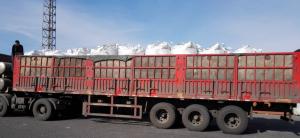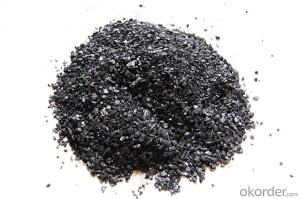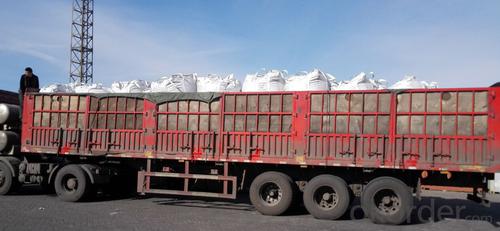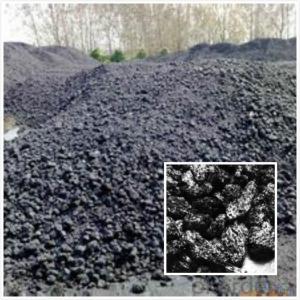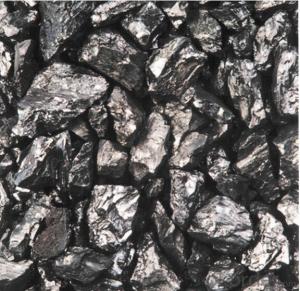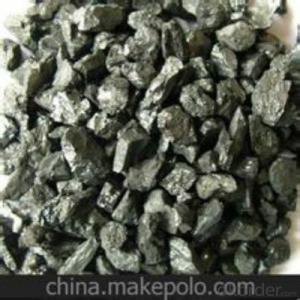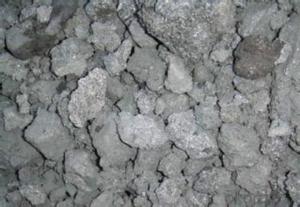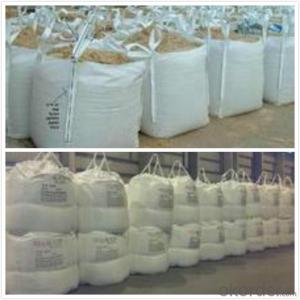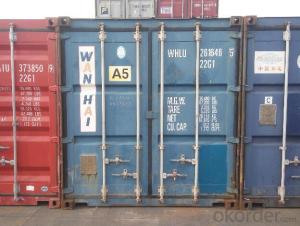Calcined Petroleum Coke Used as Carbon Additives
- Loading Port:
- Tianjin
- Payment Terms:
- TT or LC
- Min Order Qty:
- 20 m.t.
- Supply Capability:
- 1500 m.t./month
OKorder Service Pledge
OKorder Financial Service
You Might Also Like
Quick Details
Place of Origin: China (Mainland)
Application: carben additives
Dimensions: fix carben morethan98%,sulphur less5%
Chemical Composition: nature graphite powder
attribute: briquette grade
shape: <SPAN style="BORDER-BOTTOM: 0px; BORDER-LEFT: 0px; PADDING-BOTTOM: 0px; MARGIN: 0px; PADDING-LEFT: 0px; PADDING-RIGHT: 0px; FONT-FAMILY: inherit; WORD-WRAP: break-word; VERTICAL-ALIGN: baseline; BORDER-TOP: 0px; BORDER-RIGHT: 0px; PADDING-TOP: 0px" class=attr-value title=block/powder>block/powder
classify: carbon additives/petroleum coke
Packaging & Delivery
| Packaging Details: | 50kg/bag,25kg/bag or as customer requirement |
|---|---|
| Delivery Detail: | 20DAYS after payment |
Specifications
Calcined Petroleum Coke Used as Carbon Additives
Petroleum coke products can be divided into needle coke, sponge coke, projectile coke and coke breeze four kinds.
Calcined Petroleum Coke
F.C.: 98.5%MIN
ASH: 0.8% MAX
V.M.: 0.7%MAX
S:0.5%MAX
Moisture: 0.5%MAX
Structure
Calcined Petroleum Coke Used as Carbon Additives
Shape: granule
- Dimensions: 0-1mm, 1-5mm, 1-6mm, 2-8mm, etc
- Product Type: Carbon Additive
- C Content (%): 98-99.5% MIN
- Working Temperature: -
- S Content (%): 0.5%-0.7%MAX
- Ash Content (%): 0.7%MAX
- Volatile:0.8%MAX
- Moisture: 0.5% MAX
- ADVANTAGE: low ash & sulfur
- COLOR: Black
Feature
Calcined Petroleum Coke Used as Carbon Additives
Physics and chemistry performance:
Unit | Index | |||||
No.1 | No.2 | No.3 |
| |||
Density | g/cm3 | 2.04 | 2.00 | 2.00 | ||
sulphur content | %≤ | 0.5 | 1.0 | 2.5 | ||
volatility | %≤ | 0.5 | 0.5 | 0.5 | ||
ash content | %≤ | 0.5 | 0.5 | 0.5 | ||
moisture | %≤ | 0.3 | 0.5 | 0.5 | ||
charcoal | %≤ | 98.5 | 98.0 | 98.0 | ||
Image
Calcined Petroleum Coke Used as Carbon Additives
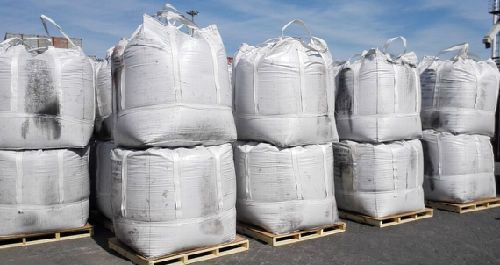
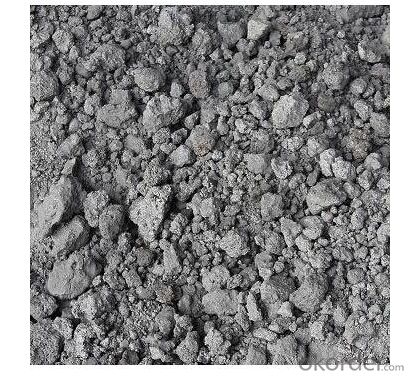
FAQ:
Calcined Petroleum Coke Used as Carbon Additives
How to classify calcined petroleum coke?
1) According to difference of sulfur content, can be divided into high sulfur coke (sulfur content more than 4%), sulphur in coke sulfur content (2% 4%) and low sulfur coke (sulfur content below 2%).
2) Petroleum coke products can be divided into needle coke, sponge coke, projectile coke and coke breeze four kinds:
3) Needle coke, has obvious needle-like structure and fiber texture, mainly used for steel-making in high power and ultra-high power graphite electrode. As a result of needle coke in sulfur content, ash content, volatile matter and true density and so on have strict quality requirements, so the production process of needle coke and raw materials have special requirements.
4) The sponge coke, high chemical reactivity, low content of impurities, mainly used in the aluminum industry and carbon industry.
5) Focal or spherical coke: the projectile shape is round, diameter 0.6-30 mm, usually from the production of high sulphur, high asphaltic residual oil, can only be used as industrial fuel power generation, cement etc.
6) Coke breeze: fluidized coking process, the fine particles (0.1- 0.4 mm) in diameter, high volatile, high expansion coefficient, cannot be directly used for electrode preparation and carbon industry.
Advantage:
Calcined Petroleum Coke Used as Carbon Additives
1. High quality and competitive price.
2. Timely delivery.
3. If any item you like. Please contact us.
Your sincere inquiries are typically answered within 24 hours.
- Q: What are the 3K, 12K, UD, etc. in the appearance requirements of the carbon fiber bicycle? What's the difference?
- 3K and "12K" refer to carbon fiber woven fabrics. 3K 12K cloth cloth texture is fine, coarse texture.UD is not imitation carbon fiber, refers to the polyethylene fiber woven fabric, the strength is lower than the carbon fiber, but the density is smaller than the carbon fiber, is often used to make bullet proof material.Carbon fiber and polyethylene fiber belong to high performance fiber.Advisory 181150695.
- Q: What are the impacts of carbon emissions on the stability of polar ice caps?
- Carbon emissions have significant impacts on the stability of polar ice caps. The primary cause of these emissions is the burning of fossil fuels, which releases large amounts of carbon dioxide into the atmosphere. As a greenhouse gas, carbon dioxide traps heat and contributes to global warming and climate change. This, in turn, leads to the melting of polar ice caps. The ice caps in the polar regions are highly sensitive to changes in temperature. As the Earth's temperature rises due to increased carbon emissions, the polar ice caps experience accelerated melting. This causes a rise in sea levels, which has consequences for coastal regions worldwide. Rising sea levels can lead to increased flooding, erosion, and the loss of valuable coastal ecosystems. Moreover, the stability of polar ice caps is crucial for maintaining the Earth's climate balance. The ice caps reflect sunlight back into space, acting as a natural cooling mechanism for the planet. As they melt, less sunlight is reflected, and more is absorbed by the Earth's surface, exacerbating the warming effect. This creates a feedback loop, where the melting of ice caps leads to further warming, causing even more ice to melt. The impacts of carbon emissions on polar ice caps are not limited to rising sea levels and climate change. The loss of ice also affects the delicate balance of ecosystems in these regions. Polar ice caps provide habitat and a food source for a diverse range of organisms, including polar bears, seals, and various species of birds. The melting of ice disrupts these ecosystems, leading to declines in wildlife populations and potential extinctions. Moreover, the melting of polar ice caps also affects global ocean currents and weather patterns. The cold, dense water that forms from melting ice sinks to the bottom of the ocean and drives important oceanic circulation patterns. Changes in these patterns can have far-reaching consequences, including altering the distribution of marine species, impacting fisheries, and influencing regional climates. To mitigate the impacts of carbon emissions on polar ice caps, it is crucial to reduce greenhouse gas emissions and transition to cleaner and renewable energy sources. International efforts, such as the Paris Agreement, aim to limit global warming and reduce carbon emissions to prevent further ice cap melting. Additionally, supporting research and monitoring programs in polar regions can help us better understand these complex systems and develop effective strategies for their conservation.
- Q: Well, recently, the carbon cycle has suddenly come up with a lot of questions. What's the definition of carbon and light carbon? What are the characteristics, and what are the differences between the two?
- The organic matter is composed of recombinant LFOM was completely decomposed residue or, to re synthesis of aromatic substances as the main organic matter (mainly humus), its stable structure is complex, in fact this part of organic matter in soil clay is a combination between, or in the process of the formation of soil aggregates Among the internal organic matter enclosed in aggregates, plays a very important role in maintaining the structure of aggregates, it is difficult to be utilized by microorganisms, soil carbon pool is stable. The content of 2 components of features from a certain extent that the carbon sensitive to climatic and environmental changes of the reaction.
- Q: How does carbon affect the formation of acid rain?
- The formation of acid rain is not directly influenced by carbon. Instead, it is mainly caused by the release of sulfur dioxide (SO2) and nitrogen oxides (NOx) when fossil fuels like coal and oil are burned. However, the emission of carbon dioxide (CO2) from the burning of these fuels contributes to climate change and indirectly impacts the formation of acid rain. The rise in atmospheric carbon dioxide levels leads to the trapping of heat, resulting in global warming. Consequently, this alters weather patterns and increases the frequency and intensity of extreme weather events. These alterations can affect the formation of acid rain by changing how sulfur dioxide and nitrogen oxides disperse. Furthermore, when fossil fuels are burned and release carbon dioxide, they also release sulfur dioxide and nitrogen oxides as byproducts. When these gases react with water, oxygen, and other chemicals in the atmosphere, they can be converted into sulfuric acid and nitric acid respectively. The increased combustion of fossil fuels, due to higher carbon dioxide emissions, can lead to a greater release of sulfur dioxide and nitrogen oxides into the atmosphere, exacerbating the formation of acid rain. Therefore, while carbon dioxide itself does not directly contribute to acid rain formation, its emissions indirectly contribute by amplifying the release and dispersion of sulfur dioxide and nitrogen oxides. To mitigate the formation of acid rain and its adverse effects on the environment and human health, it is crucial to reduce carbon dioxide emissions, as well as sulfur dioxide and nitrogen oxide emissions.
- Q: Does alumina react with carbon?
- NotThe smelting of Al in industry can only be done by electrolysis. Even at high temperatures, the reducibility of C is not as strong as Al, and the melting point of Al2O3 is very high. At this temperature, C has been gasified
- Q: Stability, primary carbon, two carbon, three carbon, four carbon
- In hydrocarbon molecules, with 3 hydrogen atoms of carbon atoms is called the first carbon atom (also called a carbon atom or primary carbon atom); with 2 hydrogen atoms of the carbon atoms is called second carbon atom (also called the two carbon atoms or secondary carbon atoms); with 1 hydrogen atoms of the carbon atoms is called third carbon atoms (also called the three carbon atom or tertiary carbon atoms)
- Q: Is carbon monoxide good for people?
- Carbon monoxide is a common poison, but trace use is good for organ transplants. British researchers have recently developed a new method that can effectively use carbon monoxide to help transplant organs survive, while avoiding the risk of carbon monoxide poisoning.Excessive inhalation of carbon monoxide poisoning will lead to death, carbon monoxide into the human body, and soon the hemoglobin in blood combined with the formation of carboxyhemoglobin, causes red blood cells to reduce the oxygen carrying, the tissue hypoxia in vivo. The cardiac and central biblical system is the most sensitive to hypoxia and the earliest affected. In the air of carbon monoxide concentration reached 117 mg / M 3, people can feel headache, vertigo: up to 292.5 mg / M 3 symptoms; up to 582.5 mg / M 3 will be nausea and vomiting, exhaustion, if not timely rescue can have life risk. When the concentration of carbon monoxide in the air reaches 11700 mg / M 3, a coma occurs; the concentration of carbon monoxide in the air reaches 1170 mg / m. The 3 spoons will soon die.
- Q: How is carbon used in the production of nanotubes?
- Carbon is extensively used in the production of nanotubes due to its unique properties and ability to form strong covalent bonds. Nanotubes are cylindrical structures made entirely of carbon atoms arranged in a hexagonal lattice. There are two primary methods for producing nanotubes: arc discharge and chemical vapor deposition (CVD). In the arc discharge method, a high voltage is applied across two graphite electrodes in an inert gas atmosphere. This causes a high-temperature plasma arc to form, vaporizing the carbon source material. The vaporized carbon atoms then condense and align into nanotubes as they cool down. This process allows for the controlled production of multi-walled carbon nanotubes (MWCNTs), which consist of concentric tubes nested within each other. On the other hand, chemical vapor deposition involves the decomposition of carbon-containing gases, such as methane or ethylene, on a catalyst surface at high temperatures. The catalyst, often made from transition metals like iron, nickel, or cobalt, facilitates the growth of nanotubes by providing active sites for carbon atoms to attach and form tubular structures. The resulting nanotubes can be either single-walled (SWCNTs) or multi-walled, depending on the reaction conditions. In both methods, the use of carbon as the building block is crucial. The unique carbon-carbon bonding nature allows for the formation of sp2 hybridized carbon atoms, resulting in a strong and stable lattice structure. This structure imparts exceptional mechanical, electrical, and thermal properties to nanotubes, making them highly sought after for various applications in fields such as electronics, materials science, and medicine. Moreover, carbon's versatility enables the production of functionalized nanotubes by incorporating other elements or molecules into their structure. This can be achieved through chemical modification of the carbon framework, allowing for the attachment of different functional groups or nanoparticles. These functionalized nanotubes can exhibit enhanced properties or be tailored for specific applications, further highlighting the importance of carbon in nanotube production. In summary, carbon plays a vital role in the production of nanotubes. Its unique properties, ability to form strong covalent bonds, and versatility make it the ideal building block for creating these remarkable structures with a wide range of applications.
- Q: What are carbapenem antibiotics?
- Imipenem, meropenem and ertapenem, panipenem, biapenem, doripenem, faropenem etc.
- Q: How to extinguish the charcoal fire?
- 1, occasionally a barbecue, natural can be extinguished, the embers can be used for heating the future and food to eat and to cool the.2. Place a bucket of water in the oven. The correct way is to remove the carbon and put it out. Don't add water to the stove.3, the most economical way to extinguish the remaining fire with water poured into the half iron, after drying can be reused.4, the most important tip, barbecue is completed, the remaining ash without Mars, water must be extinguished once again to prevent a stirring among the dry bones.
Send your message to us
Calcined Petroleum Coke Used as Carbon Additives
- Loading Port:
- Tianjin
- Payment Terms:
- TT or LC
- Min Order Qty:
- 20 m.t.
- Supply Capability:
- 1500 m.t./month
OKorder Service Pledge
OKorder Financial Service
Similar products
Hot products
Hot Searches
Related keywords
